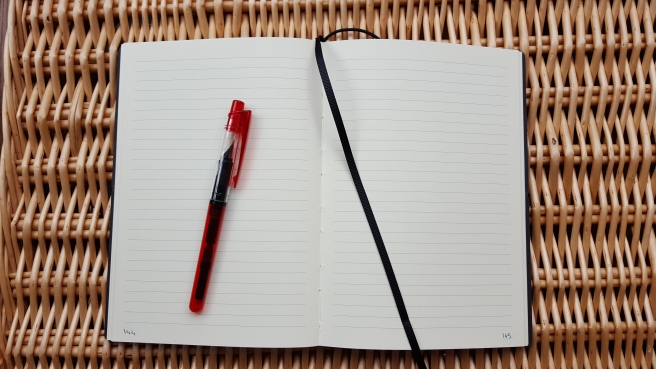On 22 September 2017, in cities around the world, the annual Pelikan Hub event took place. This is an occasion for fans of Pelikan fountain pens and inks to gather and meet each other. Anyone who wishes to attend, can register. A Hub Master is then nominated for each city, who books a venue and notifies those in his or her group of where it will take place. The Hub Master also receives gifts donated by Pelikan, to distribute on the night. It is a wonderful idea and I know of no other fountain pen company that does this.
Here in London, our Hub Master, Naresh had arranged for our group to meet at the Hyatt Regency London – The Churchill, in Portman Square, close to Oxford Street. The spacious public bar area on the ground floor was comfortable and relaxing. Naresh welcomed us and gave out the Pelikan gifts as people arrived. I was delighted to receive a bottle of Pelikan Edelstein Smoky Quartz ink, a very useful, generous and unexpected present.
Our group spread out around a few tables around a fireplace. Then, getting straight down to business, people got out the pens that they had brought along. Soon the table was sporting an impressive array of pens, pen cases and pen rolls and journals of various sizes.
I am a newcomer to Pelikan pens, buying my first in April 2016, the M205 blue demonstrator with a broad nib, which I love. I went on to buy an M800 in blue and black in November (which I use every day) and then, earlier this year, at auction, a vintage M400 tortoise from the 1950’s. These, my modest “flock” of Pelikans, I brought to the hub.

Many at our table had brought along very impressive pens. I was able to handle an M600 (claimed by some to be the ideal size Pelikan) and some limited editions. Our table included Katherine, visiting from San Francisco and Jonathan, a member of Fountain Pen Network – Philippines. Marisa was a member of the London UK Fountain Pen Club and encouraged others to come to their monthly gatherings.
I was struck afterwards by how quickly and easily, people had started talking about their pens, passing them around, inviting others to try them. Little or no introductions were needed. We all had a common interest. It was unusual and refreshing, with the same absence of formality as a child starting a conversation in a school playground.
A few slightly guilty conversations took place on the subject of how many pens one had. Someone was asked “When did you last buy a pen?” and replied “Yesterday!”
Trying other people’s vintage pens was an education. The feel of the softer, flexy nibs gives a very different writing experience. Everyone was very knowledgeable and discerning in their choices of pens and nibs.

Soon, fascinating conversations were taking place on all sides. A gentleman at our table was telling us about his gorgeous Pelikan M800 Renaissance Brown and was planning to buy only one more pen this year, the Pelikan Ocean Swirl. Another of the group had planned not to buy any pens in September. There was much to learn about pens and their interesting owners.
As well as sharing stories and experiences of their Pelikan pens, some other beautiful pens were produced and I was able to try a Nakaya Piccolo, a Pilot vanishing point (or Capless) and a Conid bulkfiller.
The time flew by and all too soon it was time to leave. I left wanting more! Before dispersing, a few group photos were taken around the Pelikan Hubs banner. Similar photos can now be seen on social media from cities all round the world and it is rather nice and special to think that fellow fountain pen enhusiasts were sharing their stories on the same day, in so many countries and cities.

I picked up a lot from talking to people and had a wonderful evening. Thanks to Naresh our Hub Master for arranging the venue, to the Hyatt Regency Hotel for their hospitality and to Pelikan for instigating this marvelous event – and for the beautiful ink.
I could not wait to try the ink when I got home. I have put it in two pens. I am thrilled with the unusual colour and its attractive shading. Many of our group – me included – plan to visit the London Pen Show on 1 October 2017 and look forward to meeting again then.






